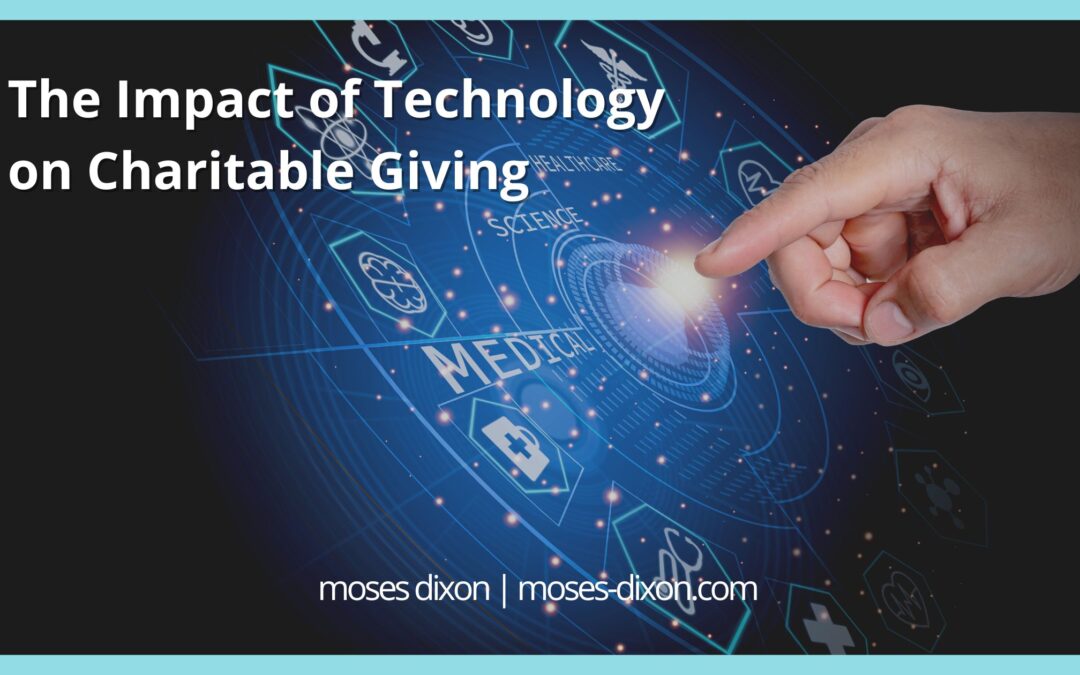Technology has transformed almost every aspect of our lives, and charitable giving is no exception. In recent years, technology has played a significant role in revolutionizing the way people engage with and contribute to charitable causes. From online platforms and mobile apps to social media and crowdfunding, technology has made charitable giving more accessible, efficient, and impactful than ever before.
One of the most notable impacts of technology on charitable giving is the ability to reach a broader audience. Online platforms and social media channels have expanded the reach of charitable organizations, allowing them to connect with potential donors across geographical boundaries. With just a few clicks, individuals can now support causes they care about, regardless of their location. This has opened up new avenues for fundraising and created opportunities for organizations to engage with supporters on a global scale.
Moreover, technology has made the process of giving more convenient and user-friendly. Traditional methods of giving, such as writing a check or mailing a donation, can be time-consuming and cumbersome. With the advent of online giving platforms, donors can contribute to their favorite causes instantly and securely. These platforms offer a variety of payment options, making it easier for individuals to give in a way that suits their preferences. Whether it’s a one-time donation or recurring monthly contributions, technology has streamlined the giving process, making it more efficient and accessible to all.
Crowdfunding is another significant development that has been made possible by technology. Crowdfunding platforms allow individuals or organizations to raise funds for specific projects or campaigns by reaching out to a large number of people online. This approach has democratized fundraising, empowering individuals to create their own fundraising campaigns and share their stories with a wide audience. It has given rise to countless successful grassroots initiatives that may not have received funding through traditional channels. Crowdfunding has enabled donors to support causes that resonate with them personally, contributing to a more diverse and inclusive charitable landscape.
Furthermore, technology has enhanced transparency and accountability in charitable giving. Online platforms and digital tools provide donors with real-time updates and insights into how their contributions are being used. Charitable organizations can now share stories, photos, and videos that highlight the impact of their work, giving donors a tangible connection to the causes they support. This transparency fosters trust and encourages donors to continue giving, knowing that their contributions are making a difference.
In addition to improving the donor experience, technology has also enabled organizations to optimize their operations and increase their impact. Nonprofit management software and tools help organizations streamline their administrative tasks, such as donor management, volunteer coordination, and financial reporting. Automation and data analytics allow organizations to make informed decisions and allocate resources more effectively. Technology has also facilitated the integration of digital payment systems, reducing the need for manual processing of donations and enabling organizations to focus more on their core mission.
Finally, technology has facilitated peer-to-peer giving and social sharing. Social media platforms have become powerful tools for raising awareness and mobilizing support for charitable causes.
Supporters can easily share information about organizations and campaigns with their networks, amplifying the reach and impact of their giving. Social media challenges, viral campaigns, and hashtag movements have become popular ways of engaging communities and inspiring collective action. Technology has transformed charitable giving into a social experience, connecting like-minded individuals and fostering a sense of community around causes.
Technology has democratized fundraising, expanded the reach of organizations, and made the process of giving more convenient and accessible. It has enhanced transparency and accountability, allowing donors to see the impact of their contributions in real-time. It has also empowered organizations to optimize their operations and increase their effectiveness. As technology continues to advance, it is likely to further revolutionize the charitable sector, creating new opportunities for giving and making an even greater impact on the world.
